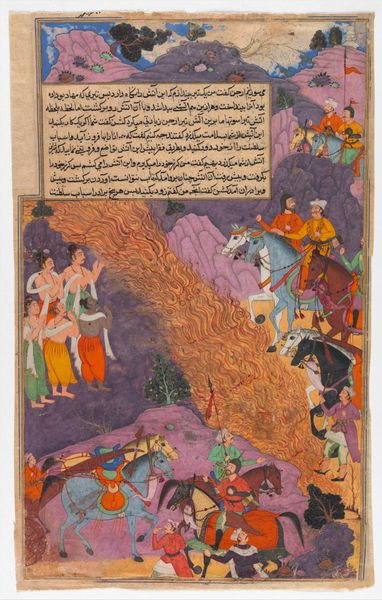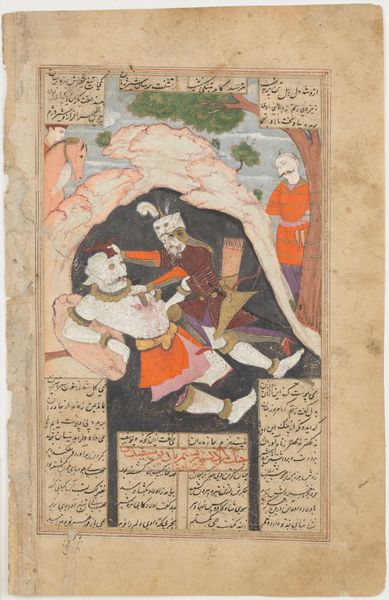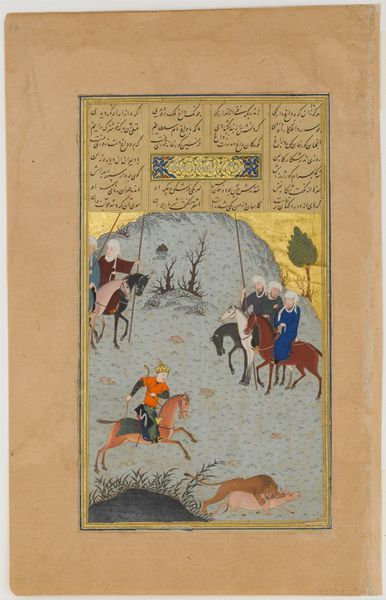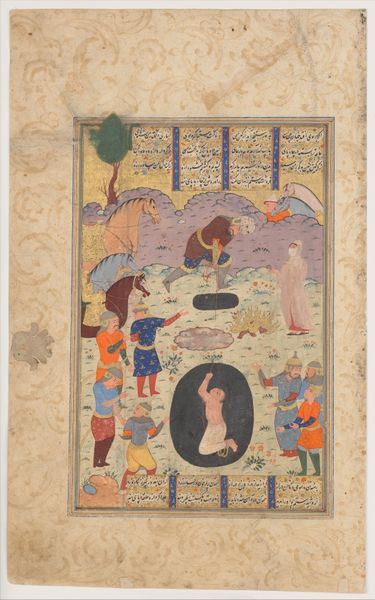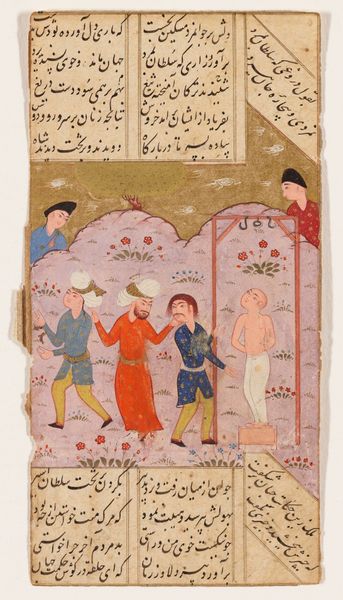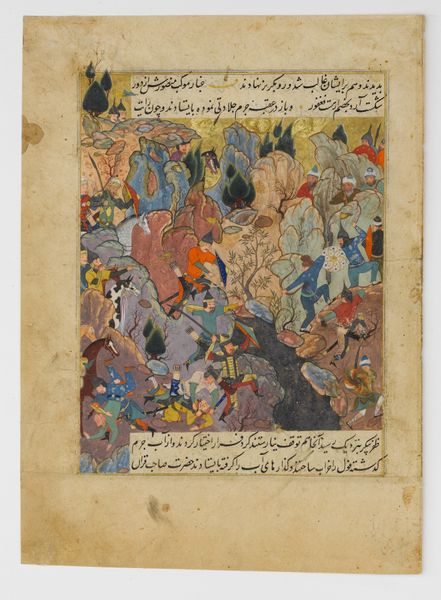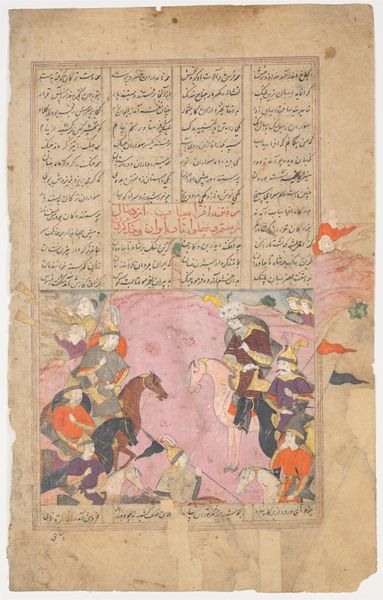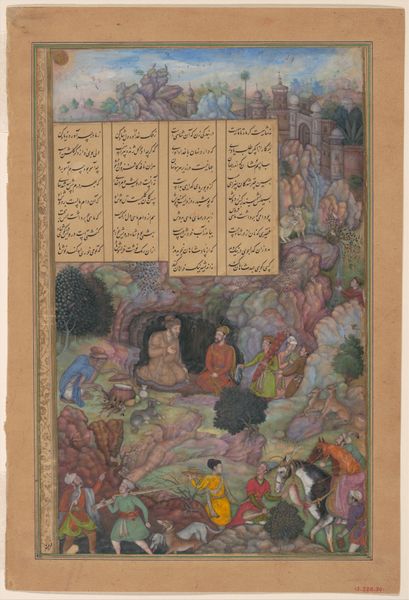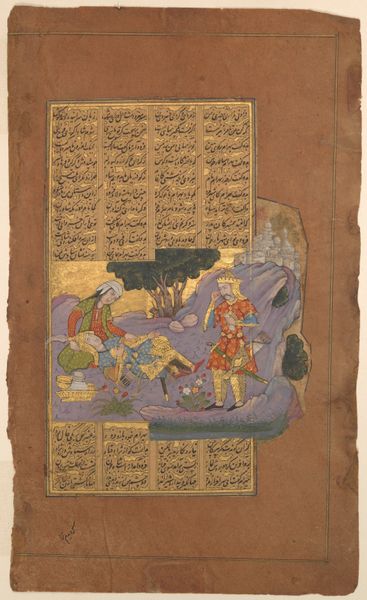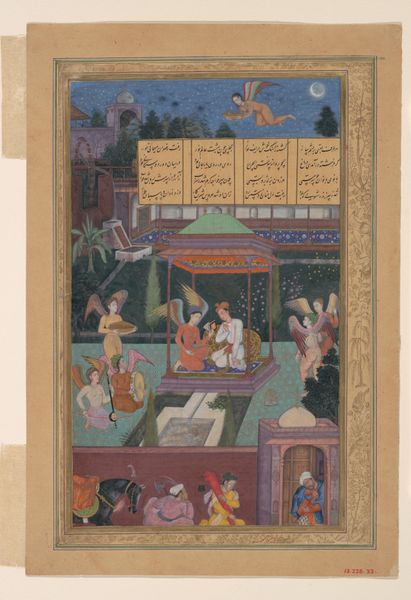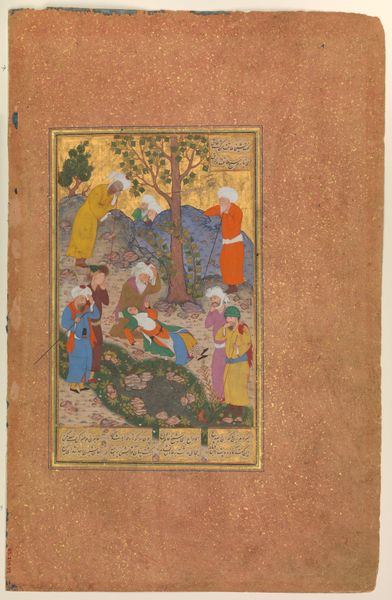
"Muhammad and His Followers Going to Battle," Folio from a Hamla-yi Haidari 1795 - 1845
0:00
0:00
painting, watercolor
#
portrait
#
water colours
#
narrative-art
#
painting
#
figuration
#
watercolor
#
orientalism
#
islamic-art
#
history-painting
#
miniature
#
watercolor
Dimensions: H. 19 5/8 in. (49.8 cm) W. 11 1/4 in. (28.6 cm)
Copyright: Public Domain
Curator: Well, here we have "Muhammad and His Followers Going to Battle," a folio from a Hamla-yi Haidari, dating roughly from 1795 to 1845, attributed to Muhammad Rafi Khan. It’s currently housed at the Metropolitan Museum of Art. Editor: It’s got a gentle dynamism. It is bright and delicate at the same time. The miniature scale almost clashes with the very serious subject matter – warriors marching. It has the quality of a dream—a brightly coloured dream sequence, with text. I am curious about how the composition places Muhammad off to the side… Curator: Indeed. The miniature comes from a lavishly illustrated manuscript telling the heroic tales of Ali, Muhammad's son-in-law. The placement emphasizes the narrative element, a particular moment in a much longer story rather than a strict central portrait. It's a historical representation crafted to bolster political legitimacy in the region, echoing popular modes of storytelling and glorifying war. Editor: Political legitimacy...hmm, the details almost obscure the violence. See, Muhammad himself is veiled, glowing, almost ethereal—is he set apart as something otherworldly? Curator: His representation adheres to a specific cultural tradition where depicting the Prophet's face directly is avoided out of respect. The halo further signifies his divine status, certainly elevating him above the other figures and emphasizing his role as a divinely inspired leader. The colours, though, that bright gold tunic – I’d say they’re intentionally rich, reflecting power but also serving to inspire devotion. Editor: I can see the care given to depicting everyone on their mounts…they all seem to possess a similar air of calm and assurance, perhaps reflective of their commitment to the cause. But there’s a grounded quality to them as well… Curator: Exactly. The narrative is complex, layering devotion with imperial authority. These illustrations played a role in shaping popular understanding of religious leadership and martial power during this era, embedding the visual rhetoric within courtly life and ceremony. And although created later, during the late Mughal era, this manuscript and its illuminations showcase enduring traditions within Persian painting. Editor: It is remarkable to me how, from so much time and distance, art continues to ask profound questions and stir conversations between what has past and is currently brewing within us. It keeps it present in our own ways. Curator: I agree wholeheartedly. Each viewing can unlock new insights into its historical contexts and invite a deeper appreciation for artistic nuance across diverse cultures. It shows the reach of art to inspire both awe and introspection.
Comments
No comments
Be the first to comment and join the conversation on the ultimate creative platform.
